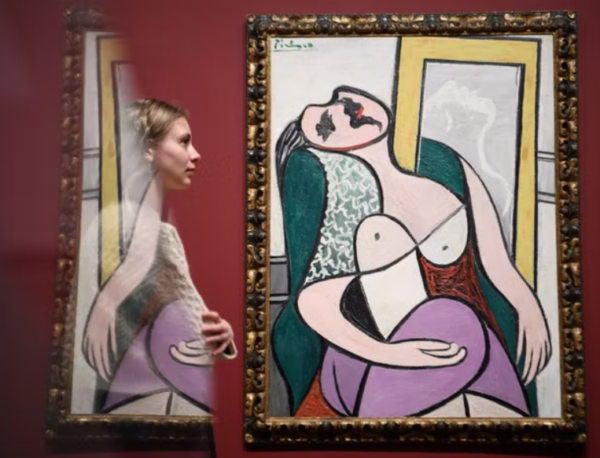
Best 20th-century artist or misogynist? 2023
In May 2021, Barcelona art teacher María Llopis held a “silent protest” in the Picasso Museum with her female pupils. This entailed wearing T-shirts with phrases like “Picasso, abuser of women” and “Bluebeard” (the latter a comparison with the French fairytale character who murdered his wives).
Picasso did not commit uxoricide, and the museum suffered only security guard hypertension. Llopis said she protested the artist’s past maltreatment of women because she felt ignored.

What is too impure for art
Her protest foreshadowed a wider controversy this year. Picasso: misogynist? What is too impure for art? Picasso died at 91 on April 8, 1973. Picasso Celebration 1973-2023 is a year-long exhibition and event program organized by the French and Spanish governments. At a press presentation at Madrid’s Reina Sofia museum last October, the King of Spain inaugurated it. (Interestingly, His Majesty didn’t cite Picasso’s “women are machines for pain”).
Most of the 40 exhibitions are in Spain and France, while others are in the US, Germany, Switzerland, Monaco, Romania, and Belgium. But more on it later.
The schedule reflects a joyful year, as the program name implies. Young Picasso in Paris at the Guggenheim Museum in New York chronicles the artist’s groundbreaking journey to Paris in his 20s. Picasso in the Thyssen-Bornemisza museum in Madrid and The Sacred and the Profane at the Thyssen. Artist and Model – Final Paintings at Basel’s Fondation Beyeler features 10 of his last paintings.
The exhibits will cover Picasso’s different eras and successes. He spent 70 years reimagining the human form. Nonetheless, program launch attendees heard carefully picked statements. “Picasso defines the 20th century with all its harshness, violence, passion, excesses, and contradictions,” said Spain’s culture and sports minister, Miquel Iceta.

Don’t hide. Picasso’s art and connection with women are still questioned.
Rima Abdul Malak, the French cultural minister, remarked, “Let’s not cover our face. Picasso’s work, especially his relationship with women, remains debated today. We must teach future generations the keys to understanding his work [and] life and develop areas of dialogue to bring them to his art.”
To quote rugby legend Willie John McBride, the ministers seem to want to retaliate first. To avoid accusations that 2023’s program is inappropriate in a post-#MeToo world. Both ministers advised against judging historical figures by modern standards. Fair enough. Some acts are always wrong.
Look through the artist’s rap sheet and decide. Picasso, a habitual philanderer, began seeing 17-year-old Marie-Thérèse Walter as his marriage to Olga worsened and her mental condition declined. He was 45 and quickly taught her sadomasochistic sex.
He forced his next lover, Françoise Gilot, to light his studio stoves every morning. As she wrote a tell-all book, Life with Picasso, he refused to visit their two children (1964).
Picasso: Creator and Destroyer (1988) by Arianna Huffington contains unproven charges that the Spaniard physically abused women. Huffington claimed to have extinguished a cigarette on Gilot’s cheek.
Yet, only psychological violence has been shown. Picasso’s cruel representations of lovers, such as 1929’s Huge Nude in a Red Armchair of Olga with a malformed physique, may be examples of this. “He subjugated them to his animal sensuality, tamed them, seduced them, consumed them, and smashed them onto his canvas,” wrote Marina Picasso in Picasso, My Grandfather (2001). He extracted their essence after many nights.
Picasso and Feminism, debuting at the Brooklyn Museum in June, covers this. It’ll be the year’s harshest show. It will examine “interconnected concerns of sexism, masculinity, creativity, and ‘genius’” with Australian comedian Hannah Gadsby as co-curator.
This will go to the heart of the day’s Picasso debate: does the joy of millions of art fans outweigh the pain of a few women at his hands? Is the Western cultural cliché of the lone, male, creative maestro not misogynistic?
In 2018, Gadsby’s Netflix stand-up comedy Nanette took on the artist. She is an art history degree. “I despise Picasso,” she said, before outlining how a male-dominated culture has long tolerated bad behavior by male artists. “Thanks to art history, I comprehend this world and my place,” she remarked. None.”
The year’s other curators’ condemnation remains to be seen. Fernande Olivier and Pablo Picasso, a Montmartre Museum show that ended, is an intriguing example. This gave the Spanish equal credit with Fernande Olivier, his early inspiration. The goal was to compensate for decades of neglecting Olivier’s work.
The 2019-20 Tate Modern Dora Maar retrospective has the same goal. “Picasso played the role of Bluebeard by eating the creative potential of each woman in his life,” Llopis said on Instagram following her protest.
What about the British absence from Picasso Commemoration 1973-2023? Are we missing a nationwide boycott? “No,” says Tate Modern director Frances Morris. “Anniversary years tend to be honeypots… and in the international rush to secure loans of an artist’s work, the quality of any display may be compromised.”
Hence, this nation had no desire to compete with France and Spain. Nonetheless, Tate may hold a Picasso exhibition in the future. Morris believes British museums depend on exhibition income. “Showing well-known artists like Picasso is the best method to draw crowds.”
